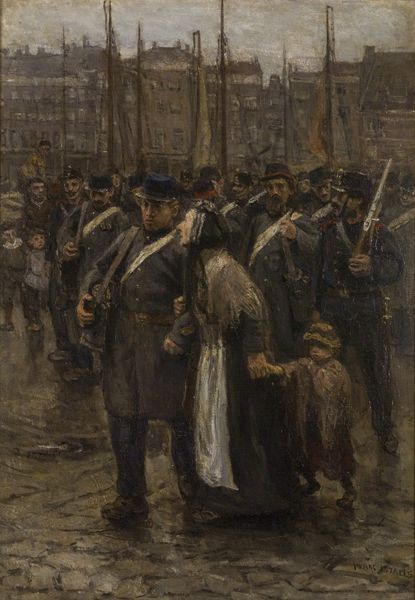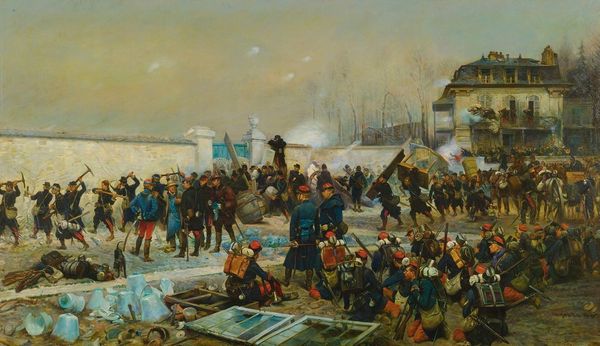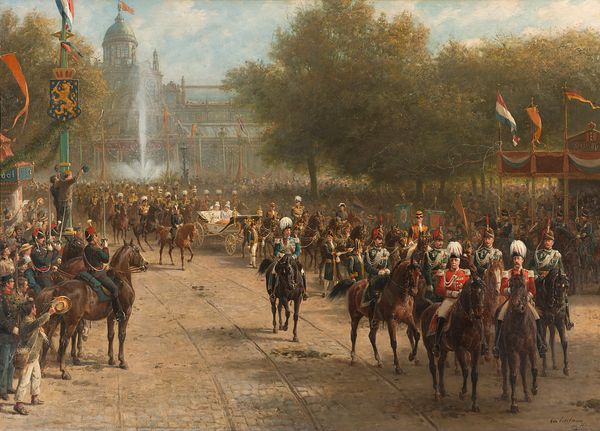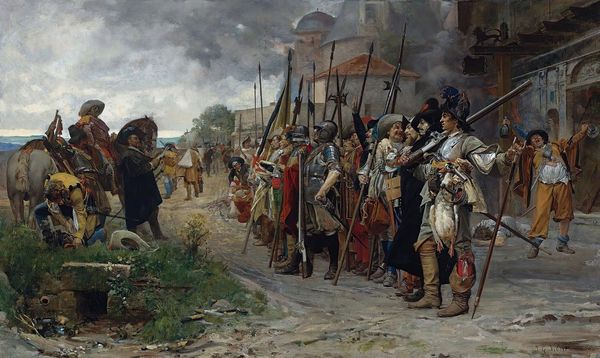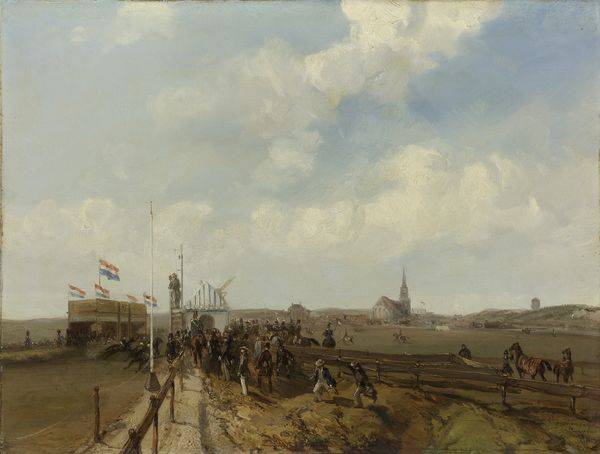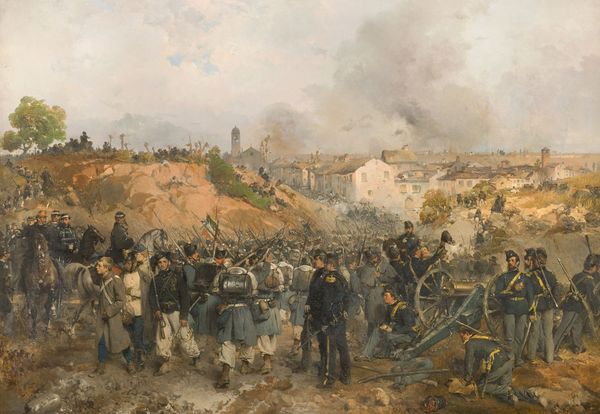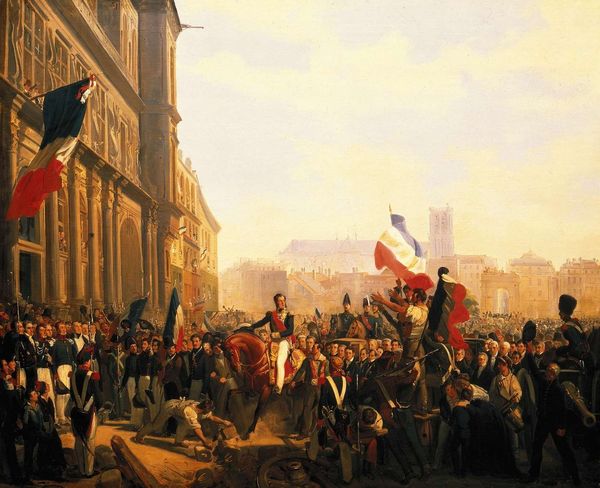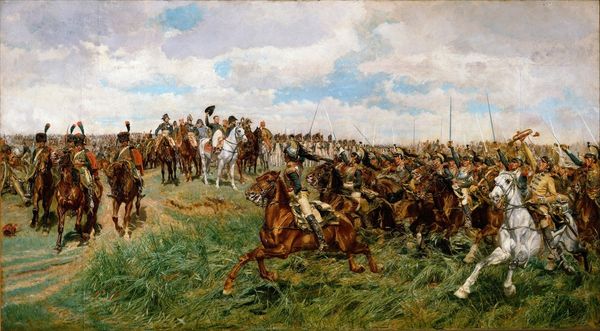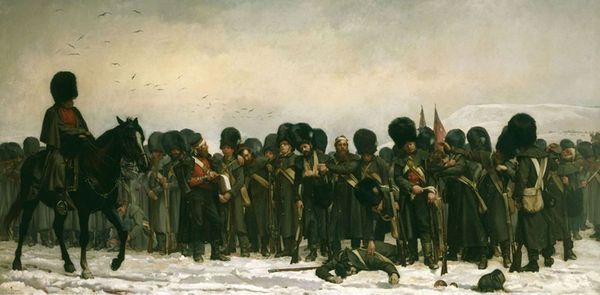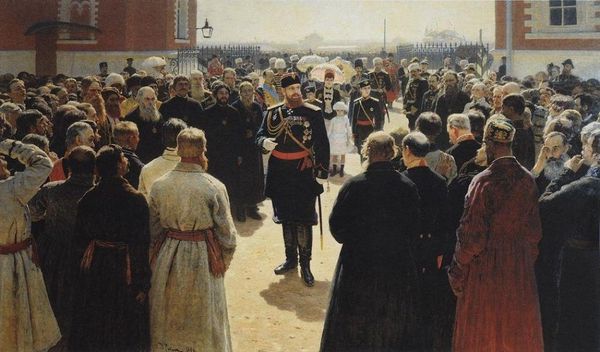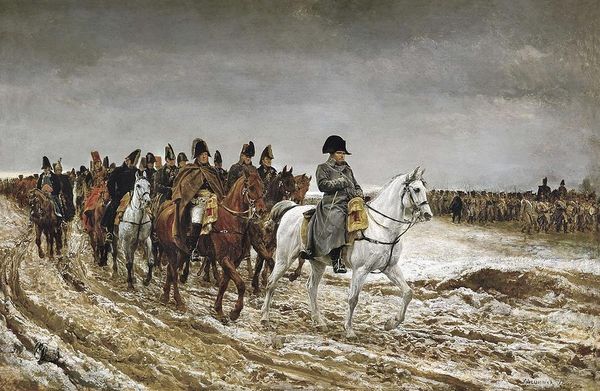
oil-paint
#
portrait
#
impressionism
#
oil-paint
#
landscape
#
charcoal drawing
#
oil painting
#
genre-painting
Dimensions: 160 x 300 cm
Copyright: Public domain
Curator: At first glance, there is a sense of movement here. Somber, almost bleak, but undeniably kinetic. Editor: Indeed. This is "Transport of Colonial Soldiers," painted in 1884 by Isaac Israels. It is currently housed at the Kröller-Müller Museum in Otterlo. A striking piece done in oils that, despite the grand historical context it hints at, almost feels like a snapshot of everyday life. Curator: Snapshot is the right word! Look at how the light reflects off the wet cobblestones, the grays and browns dominating the color palette. Yet, beneath the surface is a symbol of impending violence. Editor: Precisely. Israels’ impressionistic style somewhat softens the harsh realities of Dutch colonialism. We are seeing this procession, presumably embarking to the Dutch East Indies. It's not just about portraying a landscape but also the human cost of imperialism. Notice the weary faces, the forced march. Curator: It’s interesting how the marching soldiers fill almost the entirety of the canvas—almost like the rhythm of the drums, flutes, and marching is a chant that will lull anyone looking into believing the same reality. The lion sculptures are a subtle suggestion of Dutch power at the time. What’s particularly intriguing is the anonymity given to the soldiers, and a particular sensitivity is shown to the locals among the crowd, almost acting as quiet protestors. The family holding hands… they serve as anchors to the reality outside of the military state. Editor: A protest simmering beneath the surface—an uncomfortable truth. Israels uses the familiar, seemingly innocuous, imagery of daily life to speak to something much larger, forcing a reconsideration of historical narratives. One begins to ask what stories are omitted when we frame conflict within romantic or glorifying portrayals. Curator: It serves as a reminder to remain watchful and to delve beneath superficial portrayals of national pride. Even seemingly ordinary scenes might be laced with potent underlying symbols that can remind us to reflect on forgotten memories and uncomfortable events in time. Editor: Absolutely. Art like this encourages a crucial dialogue about whose stories we elevate and whose voices are suppressed. It is definitely a thought-provoking example of Impressionism.
Comments
No comments
Be the first to comment and join the conversation on the ultimate creative platform.
